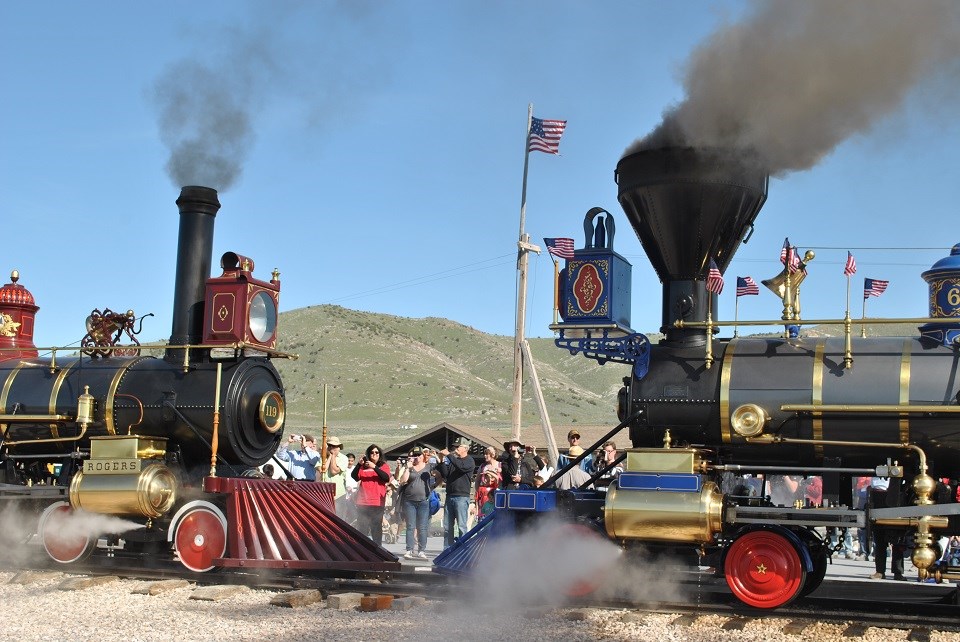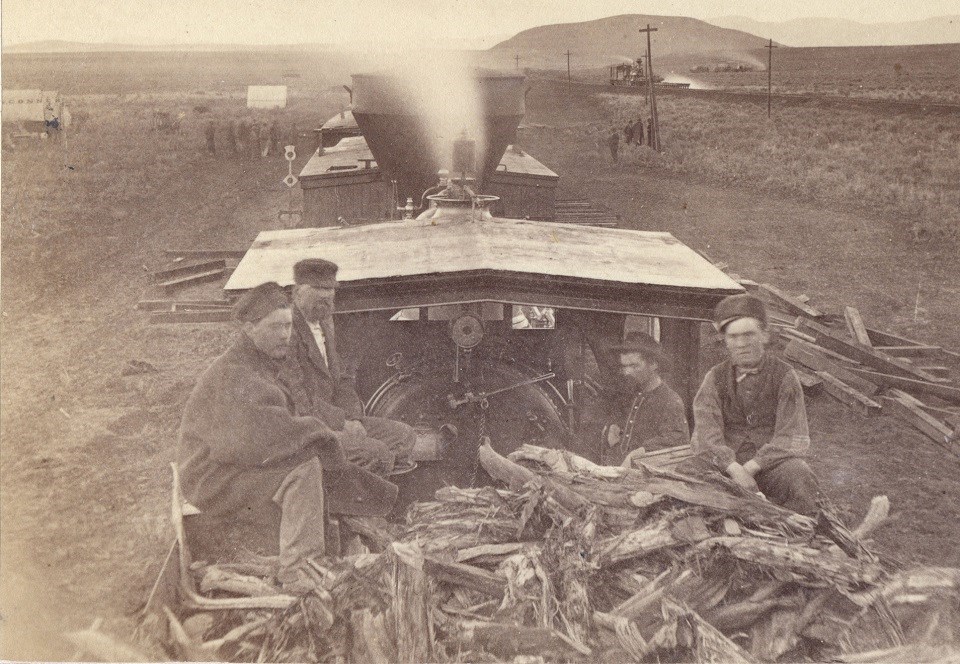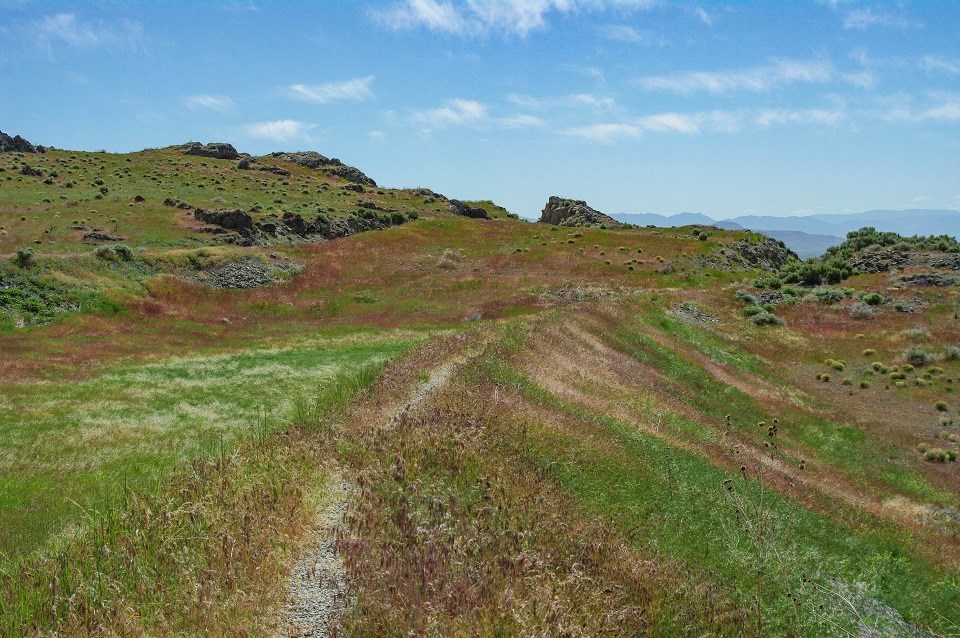Last updated: June 27, 2019
Article
National Park Getaway: Golden Spike National Historical Park

NPS Photo
One hundred and fifty years ago, the nation was joined at the rails at Promontory Summit in present-day Utah. A crowd gathered on May 10, 1869, to witness the driving of a ceremonial golden spike connecting the Central Pacific and Union Pacific railroad lines to complete the Transcontinental Railroad. At 12:47 pm, a telegraph flashed across the country: D-O-N-E.
Golden Spike National Historical Park in northern Utah tells the complex story of how the Transcontinental Railroad united the nation in many ways, ultimately changing life for every person on the continent. Building the cross-continent railways was a grueling, arduous task for thousands of workers who came from many different backgrounds, including formerly-enslaved African Americans and immigrants from Asia and Europe hoping to build a new life. The tracks often crossed lands of American Indians growing increasingly concerned of the continuing influx of settlers.
Once completed, the Transcontinental Railroad revealed a modern engineering marvel. The nation was forever united from the east coast to the west coast. Trips across country that once took months, now took days passing through terrain that was unreachable by most people except now through daring engineering ingenuity. American innovation and business expanded west at a rapid pace dramatically changing life in the territories and western states for all peoples.

Alfred A. Hart Collection
First stop on your journey—the Visitor Center. Get all the information to plan your trip around the park. Then head to the Engine House to see replica 19th-century locomotives that traveled the legendary railroads of the West. The No. 119 and Jupiter are fully-functional replicas of the originals that met at Promontory Summit for the “Wedding of the Rails” ceremony on May 10, 1869. Ranger-led and self-guided tours of the Engine House tell the story behind the two famous locomotives, how they operate, and give a peek into life on the transcontinental railroad.
During the summer months, see No. 119 and Jupiter pick up steam on the tracks for demonstrations. Reenactments of the “Driving of the Last Spike Ceremony” also take place throughout the summer. You may even be recruited to join in the festivities of the historic event! Learn more about maintenance of Victoria-era locomotives October through April when staff and volunteers work on preserving the park’s locomotives and ask how you can get involved as a volunteer.

NPS Photo
Explore the historic tracks on foot by walking the Big Fill Loop Trail, a 1.5-mile path on the original Central Pacific and Union Pacific grades. The trail includes a section of the Central Pacific’s Big Fill where you can walk through cuts, over fills, and see drill marks of where workers blasted rock away giving appreciation on how these feats were accomplished with simple tools and a lot of endurance.
Drive the transcontinental railroad grade on an auto tour to see what railroad workers in 1869 were building. The East Auto Tour brings you past cuts, fills, and culverts in a two-mile drive. The seven-mile West Auto Tour is home to the “10 Miles of Track, Laid in one Day” sign where the Central Pacific Railroad built 10 miles and 56 feet of track on April 28, 1869. Remember to look both ways when crossing railroad tracks in case there is a locomotive demonstration in progress.
